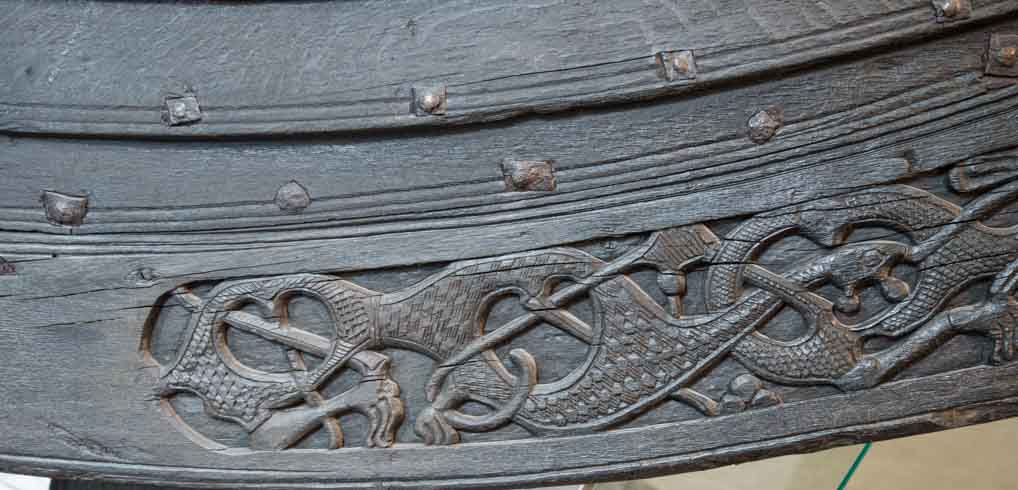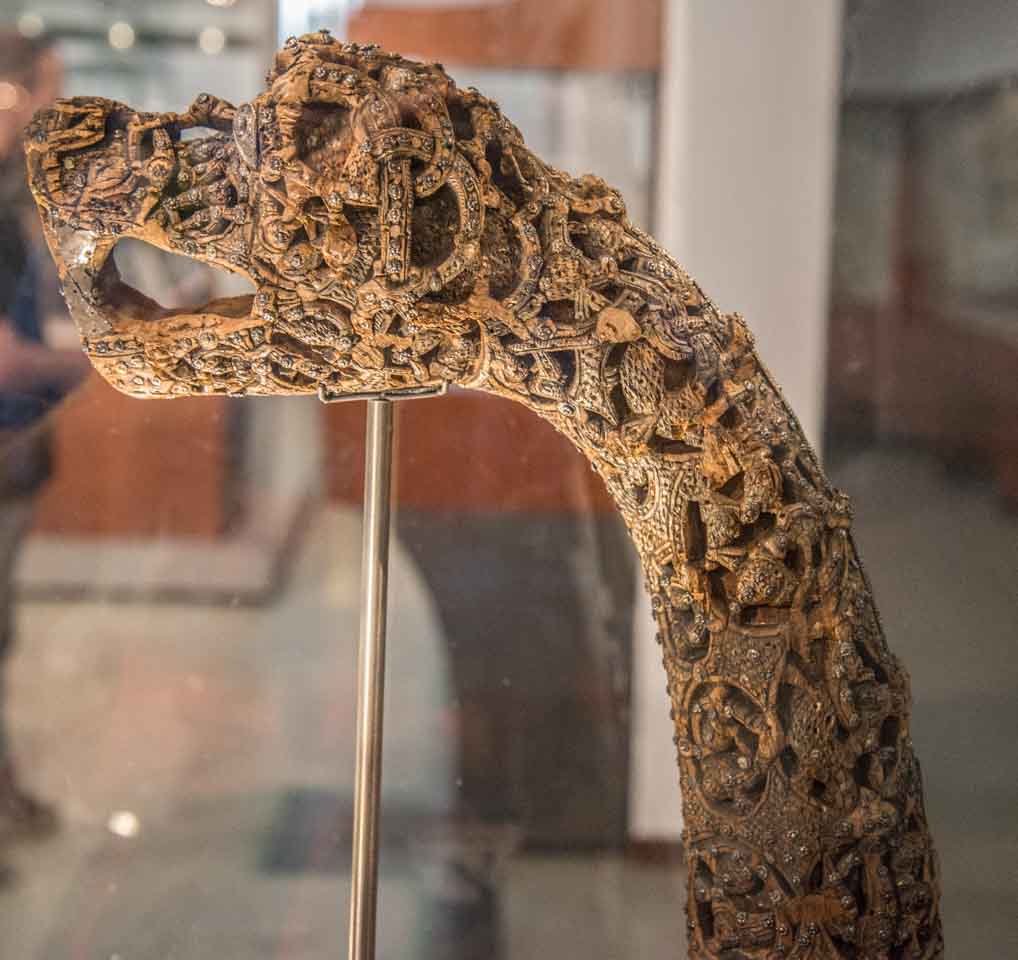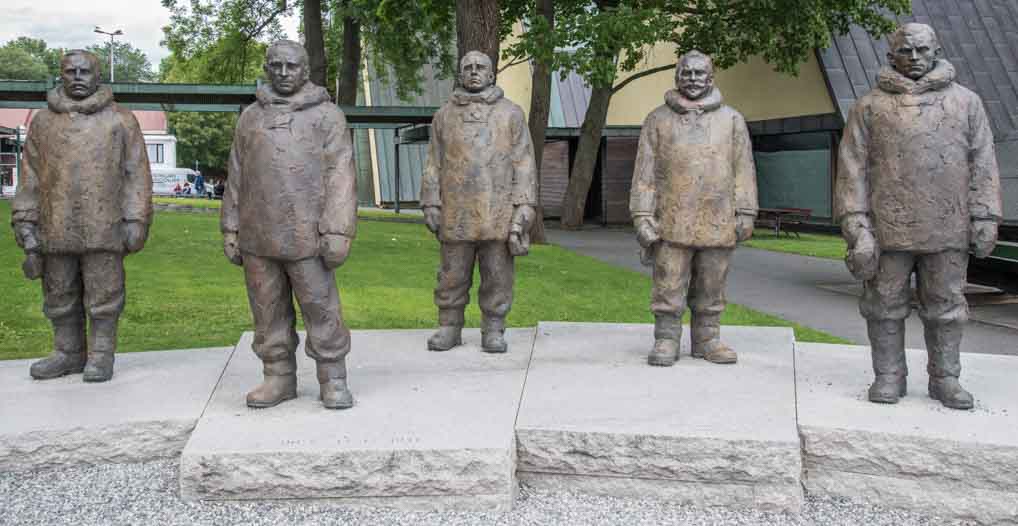After a meeting of Team Basil it was decided that one of its members (me) would go on the brave and lonely mission to explore some of Oslo’s museums, while the others (mainly Sarah) would remain behind and fulfil domestic chores such as doing the laundry (puts on tin helmet and waits for feminist explosion!).
That having been decided it was then necessary to choose whether to buy individual tickets for each museum or commit to the rather expensive “Oslo Pass” which for 395 NOK (€42.25) allows free entry into most museums and free use of public transport. Since each major museum is 100 NOK and a day pass for public transport is 90 NOK, it is necessary to visit at least 4 museums for a Oslo Pass to be worthwhile. I went for the Oslo Pass and since I toured 6 museums and wasted an inordinate amount of a public servant’s time due to my idiocy – TAKE THAT Oslo’s public finances!
There are a group of mainly nautical themed museums outside of central Oslo on a nearby peninsular, so I started with those. First the Viking Ship Museum, which houses two Viking ocean going ships in perfect condition and a third in a less good state. The ships are all about one thousand years old and after having been used as ships were then utilised to bury important members of Viking society. The peat in which they were buried, along with various grave goods, are the reason they have been preserved so well.

Viking Ship
The ships are the main focus of the exhibition because the graves had all been robbed in earlier centuries and so not many of the grave goods had survived. The boats are huge and for the first time I really began to understand how the Vikings managed to navigate open oceans, with clear evidence that they reached Canada.

Bow of one of the Viking Ships
The museum was a little disappointing generally, in that there was little attempt to explain anything about Viking society, their achievements and their place in history. Since I found out later that Oslo’s University has a huge collection of Viking finds which it doesn’t have space to display, much more could have been done with a little co-operation.

Detail from bow of Viking Ship

Detail from Viking Sleigh Harness
The Fran Museum, which could really be called the Museum of Polar exploration, is again based around ships. In this case two of the ships used by the first person to reach the South Pole, Roald Amundsen. This museum was excellent, telling the story of Artic and Antarctic exploration right back to the voyages of Cabot, although, understandingly concentrating on Norwegian heroes Nansen and Amundsen.

The Fran
There was a wealth of exhibits, as much explanation as most people would want, a simple but effective film and of course the two ships. The Fran can be boarded and explored right down to the lower decks. This was my favourite of the museums today.

On boar the Fran

Statue of Amundsen and the other successful conquerors of the South Pole
Third up was the Kon Tiki Museum, which may be a bit obscure to some, although not to me, who devoured the books written after the two expeditions to which this museum is dedicated. The Norwegian Thor Heyerdahl was a Norwegian adventurer who mounted two famous expeditions to prove his rather unconventional (now and then) theories.
The first was that Polynesia had been populated by people sailing in balsa wood rafts from South America rather than from Asia as was the conventional theory. He built such a raft, Kon Tiki, and succeeded in proving it was possible, by sailing it across the Pacific. His second theory was that there had been contact between the ancient Egyptians and Central America, as proved (he proposed) by common use of pyramids, amongst other things. Again he built a ship, RA, this time using traditional Egyptian papyrus techniques and after two attempts, with RA II, successfully made a crossing.

Replica of Ra
The museum houses replicas of Kon Tiki and RA and much more besides. Although I had been fascinated by these stories as a boy, the museum failed to really rekindle that enthusiasm.
My fourth museum was the National Maritime Museum, and maybe I was becoming tired, but I was in and out in ten minutes. It seemed to be full of model ships, many being modern cruise liners and one of the exhibitions I tried, on being torpedoed, was entirely in Norwegian, which didn’t help. Maybe this is one if you have several days and plenty of patience.
I then took a (free) bus back into Oslo centre and re-mortgaged my house for a Calzoni for lunch, followed by the National History Museum. I was mainly interested in, what I hoped would be, an extensive Viking collection. Again I was disappointed. There were a couple of rooms of Viking finds, but no explanations in English and little in Norwegian. I discussed this with two of the curators who explained that it had been set up for school parties and would, in future, be rehoused, with other parts of the Oslo University’ Viking collection, in a new custom built structure on the harbour and presented appropriately for adults.
Finally it was the turn of the National Gallery. Before I entered I had to lock my rucksack in a locker, where I needed to use a number code of my own choosing. Following this I had a thoroughly enjoyable visit. It is a small gallery, as national galleries go, but none the worse for that. There is a good room of french impressionist and post impressionists and of course many of their less well known Norwegian contemporaries. The room which I presume most people have come to see is that with works by Edvard Munch.
As a faux angst ridden University student I, of course, had a poster of “The Scream” on my wall, but this room buts the iconic painting in the context of Munch’s wider and often equally good work, with such powerful paintings as his “Madonna” and “Sick Child”.
After that I had had enough and was museumed out. I quickly went down to retrieve my rucksack, only to realise I hadn’t noted the number of my locker. IDIOT. I knew the general area and so punched in my code into a few lockers without success. There was a security guard who was nearly full time opening lockers for people who had forgotten their codes, but, to my embarrassment, there was nobody else who had forgotten where their locker was! Clearly I was missing Sarah’s steadying influence!
The security guard tried four lockers in, what I thought was, the correct area but to no avail, so he called his superior. He looked at my entrance ticket and said he would look at the CCTV for the lockers and find out which locker I had used! About 15 minutes later he was back and released my rucksack. I’m pretty sure I had already tried that locker so maybe I had forgotten the code as well.
After a long trudge back to get my bus, during which I poked my head in the Cathedral, only to confirm that it was no more interesting inside that out, I caught the no. 74 back to Camping Ekeberg, to find the rest of Team Basil relaxed and with my undies sparkling clean!
Tomorrow Sweden.
